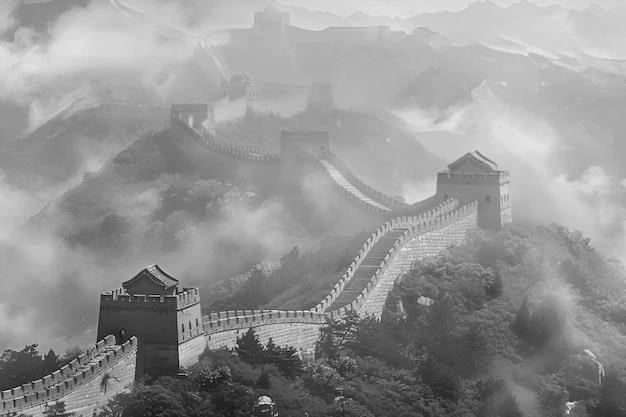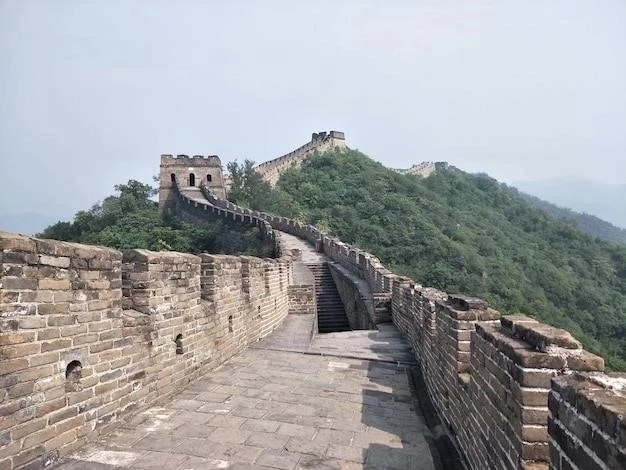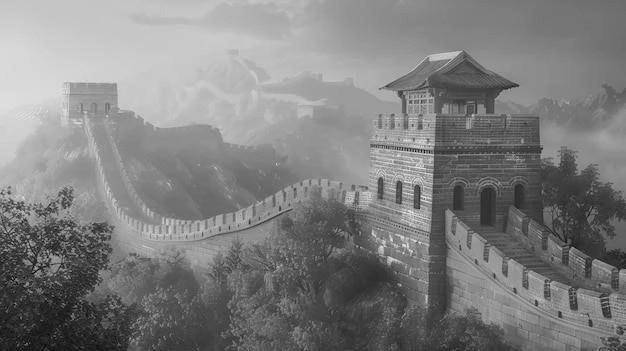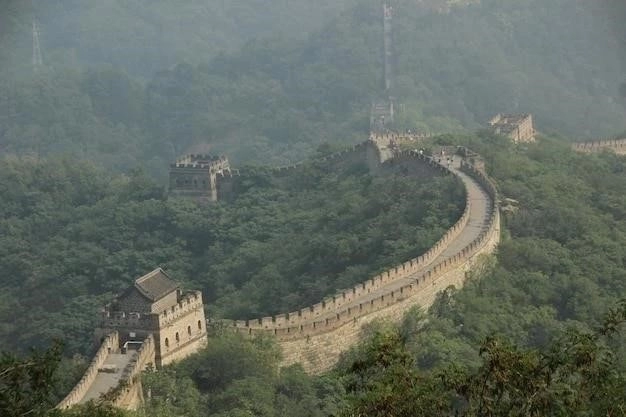Nestled amidst the rugged terrains of the Sahyadri mountain range in Maharashtra, India, lies the Tung Fort, a testament to a rich historical past and a haven for adventure enthusiasts. Known as “Kathingad” in Marathi, meaning “difficult fort,” Tung Fort offers a challenging yet rewarding trekking experience coupled with breathtaking panoramic views. This comprehensive guide provides you with all the information you need to plan a memorable trip to this historical marvel.

Location and How to Reach
Tung Fort is located about 60 kilometers from Pune and 12 kilometers from Malavli railway station. It stands majestically at an elevation of 1075 meters above sea level, overlooking the serene waters of the Pawna Dam.
Reaching Tung Fort:
- By Road: The most convenient way to reach Tung Fort is by road. You can drive down from Mumbai or Pune and park your vehicle at the base village of Tungi.
- By Train: The nearest railway station is Lonavala, well-connected to Mumbai and Pune. From Lonavala, you can hire a taxi or take a local bus to reach the base village.
- Built by the Adil Shahi dynasty before 1600 CE.
- Captured by Chhatrapati Shivaji Maharaj and integrated into the Maratha empire.
- Used as a watchtower to monitor enemy movements and protect trade routes.
- Witnessed several battles and skirmishes between the Marathas and the Mughals.
- Comfortable trekking shoes: The terrain can be rocky and uneven, so proper footwear is crucial.
- Sufficient water: Carry at least 2 liters of water٫ as there are no water sources available along the trail.
- Energy snacks: Pack some energy bars, nuts, or fruits to keep your energy levels up during the trek.
- Sunscreen and hat: Protect yourself from the sun, especially during the summer months.
- First-aid kit: Its always advisable to carry a basic first-aid kit for minor injuries.
- The trek begins from the base village of Tungi, where you can find ample parking space.
- The trail initially passes through a dense forest cover, offering respite from the sun.
- As you ascend, the trail opens up to stunning views of the surrounding valleys and the Pawna Dam.
- There are a few steep sections along the trail that require a bit of scrambling over rocks.
- After about 1.5 to 2 hours of trekking, you will reach the main entrance gate of the fort;
- Tungai Devi Temple: Dedicated to the local deity, Tungai Devi, this temple is located at the highest point of the fort and offers panoramic views of the surroundings.
- Ganesh Temple: A small temple dedicated to Lord Ganesha, situated near the main entrance gate.
- Water Cisterns: The fort has several well-preserved water cisterns that were used to store rainwater, showcasing the advanced water management system of the time.
- Ramparts and Fortifications: Explore the remnants of the forts protective walls and bastions, which once provided a formidable defense against invaders.
- Post-Monsoon (October-November): The weather is still pleasant, and the greenery is at its peak.
- Winter (December-February): The weather is cool and dry, making it ideal for trekking. However, the landscape may not be as green as during the monsoon.
- Start your trek early in the morning to avoid the midday heat.
- Carry enough water and snacks, as there are no shops or eateries at the top.
- Wear comfortable shoes suitable for trekking.
- Be cautious while trekking during the monsoon season, as the trail can be slippery.
- Respect the historical significance of the fort and refrain from littering or damaging any structures.
- Inform someone about your trekking plans and expected time of return.
- Pawna Lake: A scenic artificial lake known for its camping and watersports activities.
- Lohagad Fort: Another historical fort located close to Tung Fort, offering stunning views of the surrounding valleys.
- Visapur Fort: A challenging yet rewarding trek near Lohagad Fort, known for its historical significance and panoramic views.
- Lonavala and Khandala: Popular hill stations near Tung Fort, offering scenic viewpoints, waterfalls, and caves.
- Weather Conditions: Check weather forecasts before embarking on the trek, especially during the monsoon season. Avoid trekking during heavy rains or thunderstorms.
- Physical Fitness: While the trek is categorized as moderate, a certain level of physical fitness is required. It is advisable to engage in some preparatory exercises before the trek, especially if you are not used to regular physical activity.
- Navigation and Guidance: While the trail is well-defined, its recommended to hire a local guide, especially if you are unfamiliar with the area or trekking during the off-season.
- Emergency Contacts: Inform a family member or friend about your trekking plans, including your estimated time of return. Carry a fully charged mobile phone and note down emergency contact numbers.
- Respect Wildlife: The region surrounding Tung Fort is home to diverse flora and fauna. Maintain a safe distance from wild animals and avoid disturbing the natural habitat.
- Strategic Gateways: The fort boasts multiple gateways, each strategically placed to create chokepoints and slow down advancing enemies.
- Secret Escape Route: A hidden passage, known as the “Andhar Bini,” provided a secret escape route during times of siege, highlighting the forts strategic depth.
- Watchtowers and Fortifications: Numerous watchtowers, strategically positioned along the forts perimeter, provided panoramic views of the surrounding valleys, enabling early detection of enemy movements.
- Carrying back all non-biodegradable waste.
- Staying on designated trails to minimize environmental impact.
- Respecting the local flora and fauna.
- Refraining from defacing or vandalizing the forts structure.
- Best Time to Visit: Tung Fort is accessible year-round, but the post-monsoon season (September to February) offers the most pleasant weather for trekking. The hills are adorned in lush greenery, and the waterfalls are in full flow.
- Accommodation: While camping is an option, basic accommodation is available in the nearby villages of Tungiwadi and Pawna. Lonavala and Khandala, popular hill stations, are also within driving distance and offer a wider range of accommodation options.
- Permits and Fees: There are no specific permits required to trek to Tung Fort. However, its advisable to inform local authorities or your accommodation provider about your trekking plans.
- Local Cuisine: The villages surrounding Tung Fort offer a taste of authentic Maharashtrian cuisine. Indulge in local delicacies like pithla-bhakri, vada pav, and misal pav, known for their rustic flavors and wholesome ingredients.
- Waste Management Systems: Encouraging responsible waste disposal by trekkers and implementing waste collection programs along trekking routes.
- Trail Maintenance and Restoration: Regularly maintaining existing trails to prevent erosion and minimize disturbance to the surrounding ecosystem. Restoring damaged sections using sustainable practices;
- Community-Based Tourism Initiatives: Involving local communities in tourism operations, providing alternative livelihood opportunities and fostering a sense of ownership over the sites preservation.
- Interpretive Signage and Educational Programs: Installing informative signage along trails and at key points within the fort to educate visitors about its history, ecology, and the importance of conservation. Conducting educational programs for local schools and communities.
- Unregulated Tourism: The increasing influx of visitors, while economically beneficial, can strain the forts infrastructure and surrounding ecosystem if not managed responsibly. Implementing carrying capacity limits, establishing designated trekking paths, and promoting off-season visitation can alleviate pressure on the site.
- Encroachment and Vandalism: Uncontrolled development and acts of vandalism pose significant risks to the forts structural integrity and historical authenticity. Enforcing strict regulations against unauthorized construction, implementing surveillance systems, and fostering a sense of ownership among local communities are crucial to curbing these threats.
- Climate Change Impacts: The effects of climate change, including erratic rainfall patterns and increased frequency of extreme weather events, can accelerate erosion and damage the forts structure. Implementing climate-resilient conservation techniques, such as using traditional lime mortar for repairs and stabilizing slopes with indigenous vegetation, can enhance the forts long-term resilience.
- 3D Documentation and Virtual Tours: Creating high-resolution 3D models of the fort can aid in monitoring structural changes, documenting intricate architectural details, and developing immersive virtual tours for remote access and educational purposes. This technology can also serve as a valuable tool for restoration planning and virtual reconstruction of damaged sections.
- Remote Sensing and GIS Mapping: Utilizing remote sensing techniques, such as aerial photography and LiDAR scanning, can provide comprehensive data on the forts topography, vegetation cover, and surrounding landscape. Integrating this data with Geographic Information Systems (GIS) enables effective monitoring of environmental changes, identification of potential threats, and informed decision-making for conservation strategies.
- Interpretive Signage and Multilingual Brochures: Providing clear and engaging information on the forts history, ecology, and conservation guidelines in multiple languages enhances visitor understanding and promotes responsible conduct.
- Trained Guides and Interpreters: Employing local guides trained in sustainable tourism practices ensures accurate information dissemination and fosters a deeper appreciation for the sites cultural and ecological value.
- Interactive Exhibits and Digital Storytelling: Utilizing technology to create interactive exhibits and digital storytelling platforms can enhance visitor engagement and provide deeper insights into the forts history, architecture, and surrounding environment.
- Capacity Building and Skills Development: Providing training programs in hospitality, guiding, handicrafts, and sustainable tourism practices empowers local communities to actively participate in the tourism value chain.
- Community-Based Tourism Initiatives: Encouraging the development of community-owned and operated tourism enterprises, such as homestays, local food stalls, and craft cooperatives, ensures equitable distribution of tourism benefits and fosters a sense of ownership over the sites preservation.
- Cultural Exchange Programs: Facilitating interactions between visitors and local communities through cultural events, workshops, and homestays promotes cross-cultural understanding and fosters respect for local traditions and heritage.
- Visitor Impact Assessments: Conducting regular assessments to monitor the ecological and social impacts of tourism, identifying areas of concern, and implementing corrective measures as needed.
- Adaptive Management Plans: Developing flexible management plans that can be adjusted based on monitoring data, scientific research, and stakeholder feedback, ensuring the sites long-term resilience.
- Collaborative Governance: Establishing a collaborative governance framework that includes representatives from local communities, government agencies, tourism operators, and conservation organizations ensures a holistic and inclusive approach to Tung Forts management.
History and Significance
Tung Fort boasts a rich history dating back to the 16th century. It was initially built by the Adil Shahi dynasty but was later captured by the Maratha warrior king٫ Chhatrapati Shivaji Maharaj. The fort served as a strategic watchtower due to its commanding position٫ offering a clear view of the surrounding valleys and trade routes.
Key Historical Highlights:

The Trek
The trek to Tung Fort is considered moderately challenging, taking approximately 1.5 to 2 hours to reach the top. The trail is well-defined and involves a gradual ascent, making it suitable for both seasoned trekkers and beginners with a moderate fitness level.
Trekking Essentials:
Trekking Route:
Exploring the Fort
Once you reach the top, youll be greeted by the ruins of the fort, which stand as a testament to its glorious past. Explore the remnants of the fortifications, including the main gate, ramparts, water cisterns, and temples.
Key Attractions within the Fort:
Best Time to Visit
The best time to visit Tung Fort is during the monsoon season (June to September) when the entire region is blanketed in lush greenery and the weather is pleasantly cool. The waterfalls cascading down the surrounding hillsides add to the scenic beauty. However, its important to note that the trekking trail can be slippery during the monsoon, so extra caution is advised.
Other Suitable Times to Visit:

Tips for Visitors
Nearby Attractions
While youre in the region, consider visiting other nearby attractions:
Conclusion
Tung Fort, with its rich history, challenging trek, and breathtaking views, offers an unforgettable experience for history buffs and adventure enthusiasts alike. Whether youre a seasoned trekker or a beginner looking for a moderate challenge, Tung Fort is a must-visit destination in Maharashtra. Plan your trip, pack your bags, and get ready to be captivated by the charm of this “difficult” yet rewarding fort.
Accommodation and Facilities
While Tung Fort itself does not offer any accommodation options, the nearby town of Lonavala provides a range of hotels, resorts, and guesthouses to suit different budgets. Camping near Pawna Lake is also a popular choice for those seeking an immersive experience in nature.
Its important to note that Tung Fort has limited facilities. There are no shops or eateries atop the fort, so it is essential to carry sufficient water, snacks, and any necessary supplies. Visitors are advised to carry back their trash to maintain the cleanliness and ecological integrity of the site.
Preservation and Conservation
Tung Fort, as a historical monument, is protected by the Archaeological Survey of India (ASI). Visitors are expected to respect the sanctity of the site and refrain from any activities that could damage or deface the forts structure. It is crucial to follow responsible tourism practices, such as avoiding littering, staying on designated paths, and minimizing noise pollution.

Beyond the Trek: Cultural Significance
A trek to Tung Fort is not just an adventure; its an immersion into the rich tapestry of Maratha history and culture. The fort, once a strategic stronghold, stands as a silent testament to the valor and resilience of the Maratha warriors. The surrounding region is steeped in folklore and legends, often recounted by local villagers, adding a mythical aura to the overall experience.
Responsible Trekking and Safety Precautions
Conclusion: An Enriching Historical Excursion
A trek to Tung Fort is a journey that transcends the physical act of climbing. Its an exploration of history, a test of endurance, and an opportunity to connect with nature. As you stand atop the fort, gazing at the sprawling vistas below, youll carry with you not just memories but a deeper appreciation for the past and the enduring spirit of adventure.
Tung Fort: A Synthesis of History, Nature, and Adventure
Tung Fort, also known as Kathingad (meaning “difficult fort” in Marathi), stands as a testament to the strategic ingenuity of the Maratha Empire. This imposing structure, perched atop a plateau at an elevation of 1075 meters, overlooks the shimmering expanse of Pawna Lake and the verdant valleys of the Sahyadri mountain range. Its strategic location, characterized by steep cliffs on three sides, rendered it nearly impregnable, playing a crucial role in controlling trade routes and repelling invaders.
Architectural Significance and Historical Context
While relatively smaller in size compared to other forts in the region, Tung Fort compensates with its robust construction and cleverly designed defenses. Built primarily using locally sourced black rock, the forts architecture reflects a blend of practicality and resilience. Key features include:
Trekking to the Top: An Exhilarating Challenge
The ascent to Tung Fort is an exhilarating experience in itself, attracting trekkers of various skill levels. The trail, though well-defined, presents a moderate level of difficulty, with certain sections requiring scrambling over rocks and navigating steep inclines. However, the panoramic views that unfold with each step upwards make the effort truly worthwhile.
Conservation Efforts and Responsible Tourism
Recognizing the historical and cultural significance of Tung Fort, efforts are underway to conserve its architectural heritage and promote responsible tourism practices. The Archaeological Survey of India (ASI) oversees the forts maintenance, while local organizations and trekking groups actively participate in clean-up drives and awareness campaigns.
Visitors are encouraged to adopt sustainable tourism practices, such as:
Tung Fort: A Microcosm of Maharashtras Heritage
More than just a historical relic, Tung Fort embodies the spirit of Maharashtra—a land of resilient warriors, breathtaking landscapes, and rich cultural heritage. A visit to this magnificent fort is an enriching experience that blends history, adventure, and a profound connection with nature, leaving a lasting impression on every visitor.
The Allure of Tung Fort: A Deeper Dive
Tung Forts appeal extends beyond its historical and architectural significance. Its a multifaceted destination that offers a unique blend of experiences, catering to history enthusiasts, adventure seekers, and nature lovers alike.
A Tapestry of Scenic Splendor
The ascent to Tung Fort is a visual treat. As you traverse the winding trails, a breathtaking panorama unfolds. The azure expanse of Pawna Lake, reflecting the cerulean sky, dominates the vista. Rolling hills, carpeted in vibrant green foliage, stretch as far as the eye can see. On a clear day, the majestic peaks of other renowned forts, including Lohagad, Visapur, and Tikona, punctuate the horizon, creating a mesmerizing tableau.
A Haven for Biodiversity
Tung Fort and its surrounding region are home to a diverse ecosystem. The dense forests harbor a variety of flora and fauna, making it a delight for nature enthusiasts. Birdwatchers can spot a myriad of avian species, while trekkers might encounter playful langurs or the elusive Indian giant squirrel. The area comes alive during the monsoon season, with waterfalls cascading down the hillsides, painting a scene of ethereal beauty.
Camping Under the Stars
For those seeking an immersive experience, camping overnight at Tung Fort is an unforgettable adventure. As the sun dips below the horizon, painting the sky in hues of orange and purple, the fort takes on a mystical aura. The silence of the night, broken only by the gentle rustling of leaves and the distant calls of nocturnal creatures, creates an ambiance of tranquility and wonder. Gazing at the star-studded sky, far from the city lights, is an experience that reconnects you with the cosmos.
A Photographers Paradise
Tung Fort offers a plethora of opportunities for photographers of all levels. The dramatic landscapes, ancient architecture, and vibrant flora provide endless subjects for captivating compositions. Whether youre capturing panoramic vistas, intricate details of the forts structure, or the play of light and shadow on the surrounding hills, Tung Fort promises a rewarding photographic journey.
Planning Your Visit: Essential Tips
A Timeless Legacy
Tung Fort is more than just a tourist destination; its a living testament to the rich history, architectural brilliance, and natural beauty of the Sahyadri region. Its a place where the echoes of the past intertwine with the serenity of nature, offering a unique and unforgettable experience that lingers long after youve descended from its majestic heights.
Tung Fort: A Synthesis of History, Nature, and Adventure ⎯ Continued
Beyond the immediate allure of Tung Forts physical presence lies a deeper significance, woven into the fabric of Maharashtras history and cultural identity. Understanding this broader context enhances the visitors appreciation of the site.
A Symbol of Maratha Resilience
Tung Fort, under the reign of Chhatrapati Shivaji Maharaj, played a pivotal role in the Maratha Empires resistance against Mughal domination. Its strategic location, perched atop a steep incline overlooking vital trade routes, made it a formidable stronghold. The forts natural defenses were further enhanced by fortifications and tactical design, enabling it to withstand numerous sieges. This history of resistance resonates deeply within the cultural memory of Maharashtra, imbuing Tung Fort with a sense of pride and national identity.
An Architectural Marvel of Adaptive Design
The forts construction exhibits an impressive understanding of adaptive architecture, seamlessly blending with the natural terrain. The use of locally sourced materials, primarily black rock, not only contributes to its visual harmony with the landscape but also speaks to the ingenuity of its builders in maximizing available resources. The ramparts, gateways, and water cisterns demonstrate a keen awareness of defensive strategy and sustainable living, showcasing the advanced engineering skills prevalent during the era.
A Focal Point for Ecotourism and Heritage Conservation
In recent times, Tung Fort has emerged as a focal point for initiatives promoting ecotourism and heritage conservation. Recognizing the delicate balance between visitor access and preservation, local authorities and community-based organizations have implemented measures to minimize the environmental impact of tourism. These include:
Tung Fort: A Legacy for Future Generations
As Tung Fort transitions into the 21st century, it faces the ongoing challenge of balancing its historical and ecological significance with its growing popularity as a tourist destination. By adopting sustainable tourism practices, engaging local communities, and prioritizing conservation efforts, we can ensure that this architectural marvel and historical treasure continues to inspire and educate generations to come. A visit to Tung Fort is not merely a journey through time; it is a testament to the enduring power of human ingenuity, the importance of responsible stewardship of our cultural heritage, and the awe-inspiring beauty of the natural world.
Tung Fort: A Legacy for Future Generations (Continued)
Preserving the integrity of Tung Fort necessitates a multi-pronged approach that addresses the complexities of heritage conservation, environmental sustainability, and responsible tourism. This multifaceted strategy requires collaboration among governmental bodies, local communities, conservationists, and visitors alike.
Addressing Contemporary Challenges
Despite its historical resilience, Tung Fort faces contemporary challenges that necessitate proactive measures to mitigate potential threats. These include:
Harnessing Technology for Preservation
Leveraging technological advancements can significantly enhance conservation efforts and foster a deeper understanding of Tung Forts historical significance. Some potential applications include:
Investing in Community-Led Conservation
The active participation of local communities residing around Tung Fort is paramount to its long-term preservation. Empowering these communities through capacity building initiatives, skills training programs, and equitable revenue-sharing models fosters a sense of ownership and encourages sustainable tourism practices. By recognizing their intrinsic connection to the site, local communities can serve as effective stewards, ensuring the forts legacy endures for generations to come.
Conclusion: A Shared Responsibility
Preserving the legacy of Tung Fort is not merely an obligation but a privilege. It demands a collective effort, transcending disciplinary boundaries and embracing a holistic approach that acknowledges the interconnectedness of heritage conservation, environmental sustainability, and community well-being. By fostering collaboration, implementing innovative solutions, and instilling a sense of shared responsibility, we can ensure that Tung Fort continues to inspire awe, ignite curiosity, and connect future generations to the rich tapestry of Indias past.
Tung Fort: Embracing Sustainable Tourism for Future Generations
The preservation of Tung Forts legacy extends beyond physical conservation; it necessitates a paradigm shift towards sustainable tourism practices that balance visitor experiences with the sites long-term well-being. This approach requires a multi-stakeholder effort, engaging tourists, local communities, and authorities in a shared responsibility for the forts future.
Educating and Engaging Visitors
Transforming tourists into responsible stewards is paramount. Implementing awareness campaigns that highlight the forts significance, fragility, and the importance of respectful behavior are crucial. This can be achieved through:
Empowering Local Communities Through Sustainable Livelihoods
Integrating local communities into Tung Forts tourism framework is essential for both socioeconomic development and cultural preservation. This can be facilitated by:
Monitoring and Adaptive Management
Sustainable tourism requires continuous monitoring and adaptive management strategies to address emerging challenges and ensure the long-term well-being of Tung Fort. This includes:
Conclusion: A Sustainable Future for Tung Fort
By embracing sustainable tourism practices, Tung Fort has the potential to serve as a model for responsible heritage conservation and community-driven development. Through collaborative efforts, innovative solutions, and a shared commitment to preserving its legacy, this architectural marvel can continue to inspire awe, foster cultural exchange, and contribute to the well-being of both present and future generations.










